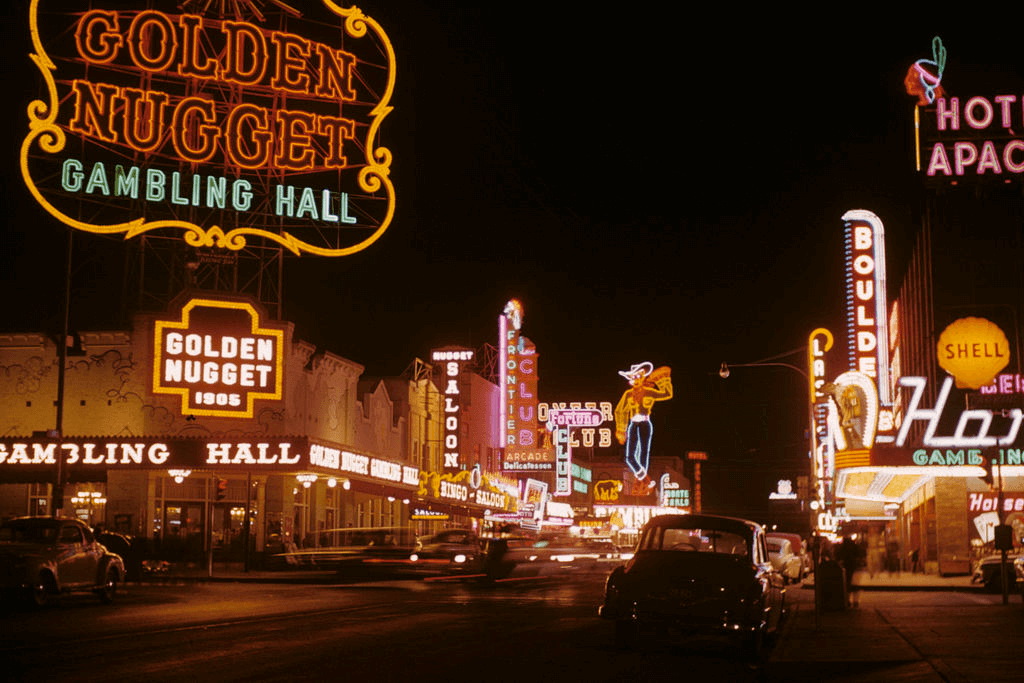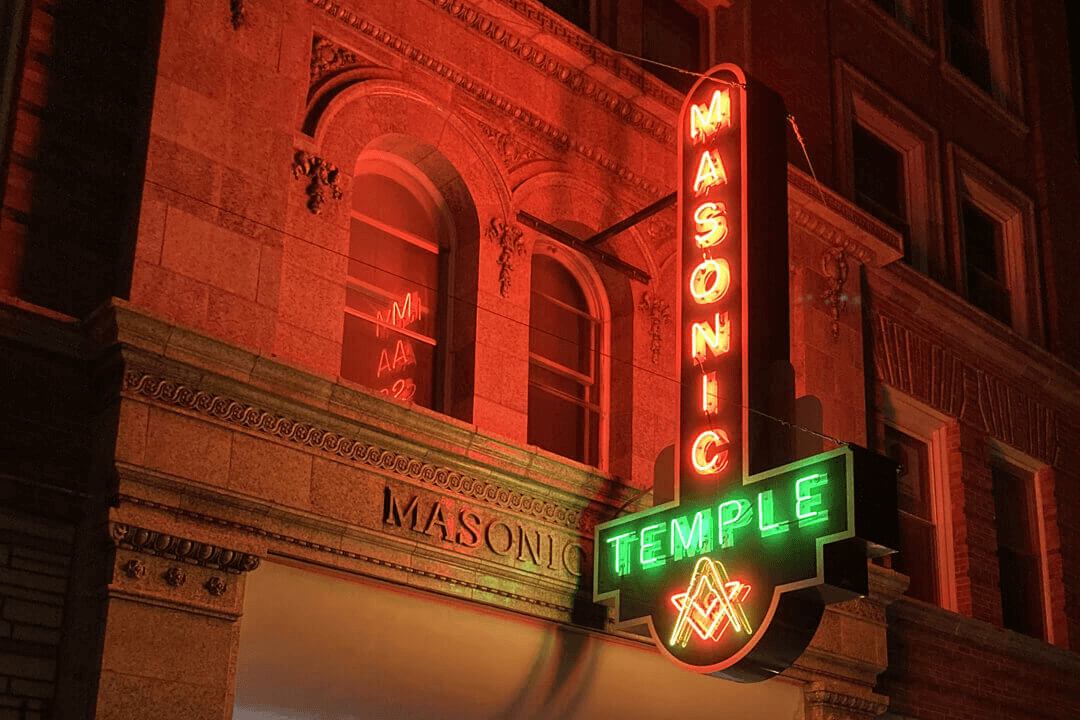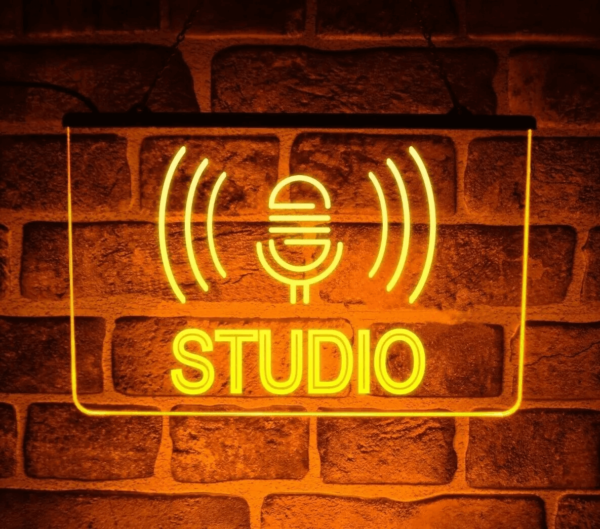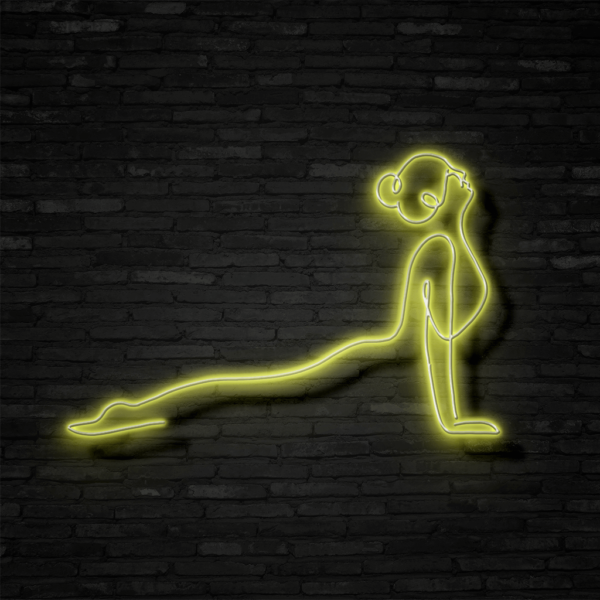
When were neon signs invented?
We all love neon signs for their colorful, cool and exciting style. Neon signs are very popular in commercial and interior settings today, but the neon signs we love and know have a long history dating back to discoveries and developments in 1675 and the 1850s. In this article, we will introduce when were neon signs invented.
When were neon signs invented?

When were neon signs invented? The theory behind neon sign technology has its roots dating back to 1675. This was a period preceding the advent of electricity when the French astronomer Jean Picard observed a faint light emanating from mercury within an air pressure gauge.
Even though this light appeared when the tube vibrated due to static electricity, the phenomenon remained unclear during that historical era.
Despite the lack of understanding, scientific exploration ensued in the subsequent years, especially after the discovery and control of electricity. This breakthrough allowed scientists to embark on inventing various types of lighting.
Neon signs, in particular, trace their origins to the efforts of glassblower Heinrich Geissler and physicist Julius Plücker. Their primary work involved creating luminous glass tubes in Germany around 1850.
Geissler tubes found application in laboratories and were utilized by miners in France. While these tubes contained air and diverse gases, including carbon dioxide and mercury vapor, they began serving as signs and lamps in the 1890s.
As for the neon signs we now recognize and appreciate for their vivid urban presence, they made their debut in 1910, introduced by a French inventor.
>>>See more: Why neon is used in advertising signs?Who invented neon signs?
When were neon signs invented? It would be unfair to claim that a single individual created neon signs. Instead, the formation of neon signs is the result of contributions from various chemists and inventors over an extended period. It took many years of exploration, research, and trial and error before neon signs became as prevalent as they are today. Below are individuals who made significant contributions to the invention of neon signs.
William Ramsay and Morris W.travers
In the 19th century, two chemists, William Ramsay and Morris W. Travers, embarked on a hunt for rare gases in the air. In 1898, William Ramsay and Morris W. Travers discovered neon along with krypton and xenon by isolating these gases from liquefied argon. Each of these gases emitted vibrant colors when placed in glass tubes and charged with high voltage. Their invention became the foundation for neon signs.
Georges Claude
Inventor Georges Claude also employed air refrigeration techniques and engaged in large-scale production for industrial applications. In 1902, he established a company called L’Air Liquide, rapidly transforming it into a multinational corporation.
Claude researched while selling liquid oxygen, hoping to make groundbreaking discoveries. Realizing there was nothing left to extract from the air after Ramsay seemingly found it all, he decided to focus on other issues, such as addressing the problem of excessively bright electric lighting. He turned to neon, leftover from his air refrigeration process, to create an alternative light source.
Claude applied the concept of inventor Daniel McFarlan Moore, utilizing an electric current through a glass tube filled with gas to produce bright white light. Claude enhanced Moore's invention by adding larger electrodes that stayed cooler longer and replacing the gases Moore used with neon. As a result, Claude's neon lamps lasted for hundreds of hours and burned brightly and steadily.
In 1910, Claude filed a patent for neon lighting. Claude acknowledged that red neon was not an ideal choice for overall lighting but was perfect for attention-grabbing decorative lights.
When did neon signs become popular?

When were neon signs invented? In 1912, Georges Claude ignited the popularity of neon signs by installing the first neon advertising sign at a Parisian barbershop. Shortly thereafter, other businesses like the Paris Opera sought the same visually appealing exteriors. To foster further growth, Claude established a company named Claude Neon, specializing in providing franchises for neon signs, especially personalized neon sign. Dozens of franchises opened worldwide.
The first neon signs in the United States emerged in Los Angeles, thanks to Earle C. Anthony, the dealership owner of the Packard Motor Car Company. Anthony had visited Paris and noticed Claude's neon signs in 1923, and he had two custom neon signs made for his showroom. The elegant green neon signs displayed the word "Packard" and were priced at half the cost of a car. These signs were so eye-catching that they reportedly caused traffic jams. In the 1920s, driving past the Packard showroom without slowing down to admire these mesmerizing neon signs became a challenging feat.
Soon after, neon signs became immensely popular in the United States, symbolizing progress and modern industry. Neon signs were primarily designed to attract the attention of travellers using the interstate highway system. As a traveller in the '30s, one could expect to encounter neon signs advertising gas stations, restaurants, and hotels across the country. Additionally, vibrant cities like Los Angeles, New York, and Las Vegas became renowned for enticing customers to dance, dine, watch movies, and more with their spectacular neon signs.
The popularity of neon signs began to decline during World War II. Many business owners were reluctant to invest in repairing malfunctioning signs and opted to replace them with signs made of plastic and fluorescent tubes. Plastic signs were cheaper and easier to maintain than neon signs. Moreover, people started associating neon signs with run-down motels, shady bars, and other undesirable establishments. In the 1970s, there was a revival of neon signs that continues to thrive today.
Why are neon signs not used anymore?
When were neon signs invented? Neon signs can still be easily found in bars and restaurants. However, many businesses have shifted to alternative creative advertising forms for various reasons:
- Neon signs are expensive.
- Elaborate custom neon signs require the extensive expertise of skilled artisans.
- Neon signs are more prone to damage compared to other advertising sign materials, making replacement challenging.
- Neon signs may pose safety hazards in cold weather due to the presence of argon.
- Neon signs are often heavier than other types of lights.
- Neon signs are less flexible than contemporary advertising signs.
Although neon signs are not as prevalent as they used to be, there is still a profound appreciation for the neon glow. You can easily find neon signs displayed in museums dedicated to preserving their cultural significance. Additionally, these signs can still be found in shops, bars, gyms, and more in many towns and cities.
Alternatives to the neon sign

When were neon signs invented? Neon signs emit a distinctive glow, unlike any other light source. However, they also come with a few drawbacks when compared to modern signage. Here are some alternatives to neon signs and how they captivate the attention of onlookers.
LED neon signs
LED neon signs produce a unique and captivating glow, similar to traditional neon signs but with higher efficiency and durability. The LEDs are very small and typically blend red, green, and blue to create a white light. Many LED signs are lighter in weight compared to traditional neon signs, making them ideal for advertising promotions, introducing new products, and showcasing events.
Some businesses utilize large LED neon signs placed in suburban areas to attract potential customers and convey the messages of their advertising campaigns. Unlike traditional neon signs, you can customize the advertisements on programmable LED neon signs to suit your needs and target specific customer groups.
Here are a few reasons why businesses should consider using LED neon signs:
- Energy-saving: LED neon signs emit light in a specific direction, reducing the need for light-trapping reflectors. They are one of the most energy-efficient lighting sources available, consuming less electricity by over 75% compared to fluorescent lights. By 2027, widespread use of LED neon signs is projected to save the United States more than $30 billion.
- Durability: LED neon signs are highly durable and have a lifespan of up to 25 times longer than fluorescent lights. With LED neon signs, you don't have to worry about frequently changing bulbs, saving time, effort, and money. In contrast, traditional neon signs require skills and time to replace or repair damaged components.
- Low heat emission: LED neon signs do not emit a significant amount of heat, unlike other lighting forms that may release up to 90% of their energy as heat.
- Reduced environmental impact: LED neon signs do not contain mercury. Some traditional neon signs, however, may contain small amounts of mercury that can pose hazards to both humans and the environment. The Environmental Protection Agency (EPA) encourages households to contact local authorities to recycle traditional neon signs instead of discarding them in household trash.
- Worthy investment: Due to the ease of maintenance and long lifespan of LED neon signs, business owners can be confident that their signs will not fail as often as other light sources. LED neon signs also perform well in harsh weather conditions, unlike traditional neon signs which may take a long time to warm up.
- Bright and attractive: Some LED neon signs use movement or bold, brilliant colors to attract attention
Business owners also have the option of creating advertisements using backlit graphics. Backlit graphics use LED neon signs, frames, and interchangeable fabric overlays featuring engaging custom designs and messages. They are also known as light boxes and can be used indoors, outdoors, or wherever there is a power source. Backlit graphics provide a flexible solution for businesses to save costs while still capturing the attention of people around them.
Digital signs
When were neon signs invented? Digital signs offer significant benefits for business owners that set them apart from any other light source. A digital sign allows you to make changes to information whenever you want to update something, whether it's showcasing a captivating video, promoting an event, introducing new menu items, or anything else you can imagine.
Furthermore, digital signs capture the attention of customers and provide a familiar feel, similar to a television. Here are some benefits you can gain by having digital signs:
- Enjoy flexibility: What could be more convenient than creating content on a computer and swiftly sending it to a billboard? There's no need to purchase a new sign every time you want to advertise a different product or service. You have endless possibilities with digital signs, as you can create a variety of animations, and videos, share news, display images, and more.
- Make a strong impression: According to a 2015 Nielsen study, 75% of travellers noticed a digital billboard in the month before the survey, and 55% noticed the message on the screen most or all of the time. In other words, digital signs stand out and leave a powerful impression.
- Inform and excite: According to the same survey, 61% of respondents agree that digital billboards are an excellent way to learn about sales and events. This suggests that digital signage is an extremely effective way to promote a business.
- Improve brand recall: 82% of survey respondents recalled advertising on digital billboards. If you want people to remember your brand, go digital.
- Boost customer satisfaction: Digital signs provide countless opportunities to make customers happy. Firstly, they make things more convenient. For example, bright menu boards give customers an easy-to-read way to explore menu options so they can make choices faster and easier. Illuminated menus also help attract outside customers. Digital signs can be programmed to change with the day, month, or season, making the workday easier for staff.
- Make customers comfortable: Digital signs can be used in various locations, from medical waiting rooms to hotel lobbies. You can use digital signage to share health tips with patients as they wait, for example. Or, digital signage can be used to direct people in a large building. Digital signs can't be missed and fit seamlessly in any setting.
- Make promotions stand out: Are you having a big sale? Did a new product hit the shelf? Generate excitement and encourage customers to buy with an attractive digital sign.
Conclusion
Above is all the information related to the process of designing and developing neon signs. Hopefully, through this article, you have found the answer to the question "When were neon signs invented?". Don't forget to share this article with people around you if you find it useful.
For more detailed information and additional support, please contact us through:
- Website: https://xneonled.com
- Email: support@xneonled.com
 Free Express Shipping
Free Express Shipping
 49% Off
49% Off
 12-Months Warranty
12-Months Warranty









